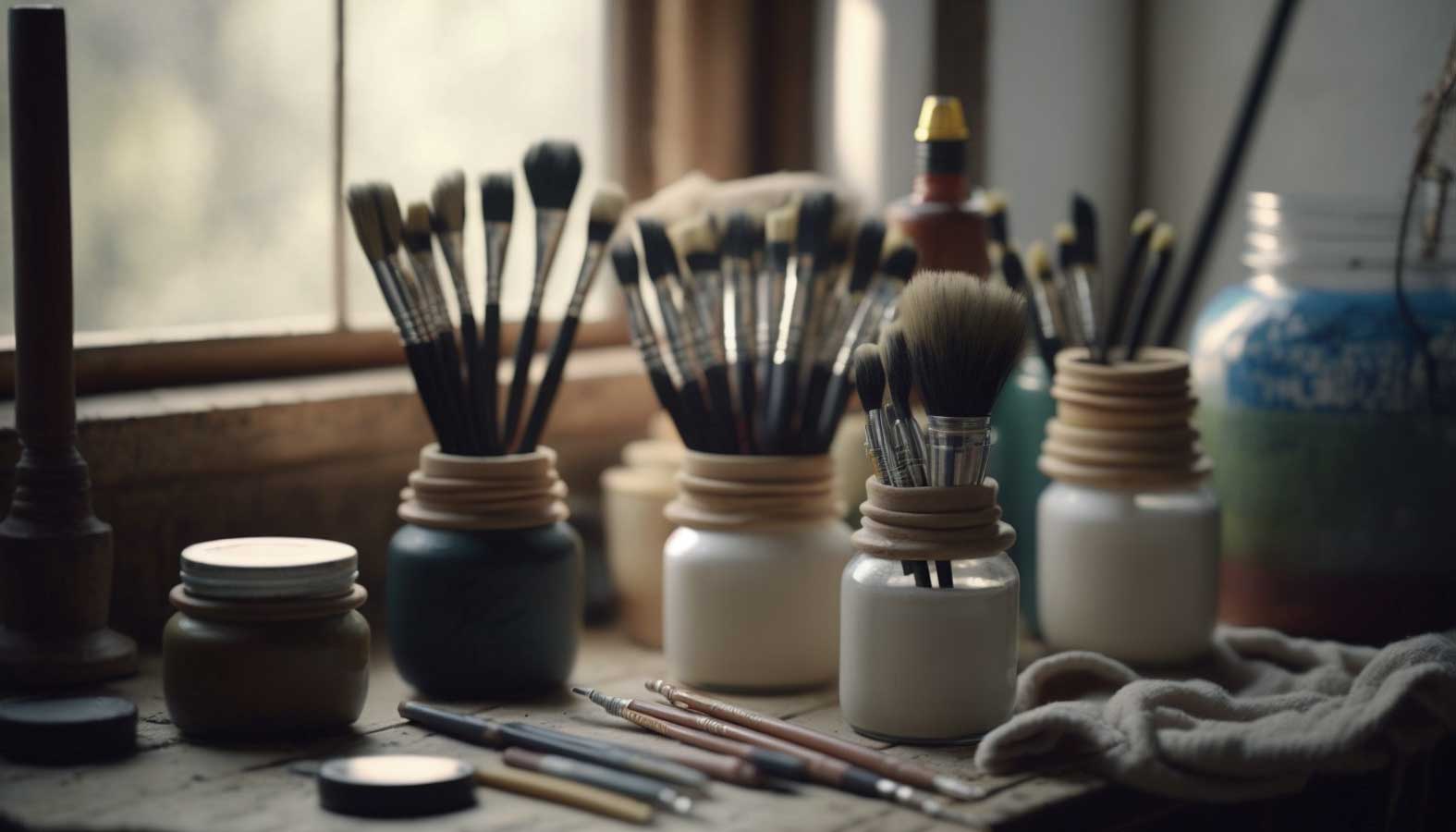
Selecting the right artist brush can be a daunting task for beginners and experienced artists. With so many different types, shapes, and sizes available, it can be challenging to know where to start. In this article, we will discuss the different factors to consider when selecting an artist's brush, as well as how to determine the size and evaluate the quality of an artist's brush.
Tuft Shapes
One of the most important factors to consider when selecting an artist's brush is the shape of the tuft. The shape of the tuft refers to the shape of the bristles on the brush. Common tuft shapes include round, flat, filbert, and fan.
Round brushes have a circular shape and are best suited for detail work and fine lines. They are also useful for creating dots and small circles.
Flat brushes have a rectangular shape and are best suited for creating broad strokes and covering large areas. They are also useful for creating straight lines and edges.
Filbert brushes have a rounded edge on one side and a flat edge on the other. They are versatile and can be used for both detail work and broad strokes.
Fan brushes have a fan-shaped tuft and are best suited for blending and creating soft edges. They are also useful for creating textured effects.
Hair Types
Another essential factor to consider when selecting an artist's brush is the type of hair used in the brush. The most common types of hair used in artist brushes are synthetic, natural, and a combination of both.
Synthetic brushes are made from synthetic fibers such as nylon or polyester. They are affordable and easy to care for but may not hold as much paint as natural hair brushes.
Natural hair brushes are made from animal hair such as hog, sable, or squirrel. They are more expensive than synthetic brushes but hold more paint and have a softer touch.
Combination brushes are made from a combination of synthetic and natural fibers. They offer the best of both worlds, with the affordability and easy care of synthetic brushes and the paint-holding ability and soft touch of natural hair brushes.
Sockets and Handles
The socket and handle of an artist's brush are also essential factors to consider. The socket refers to the part of the brush where the bristles are inserted, and the handle is the part of the brush that you hold.
Sockets are typically made from plastic or metal, and the quality of the socket can affect the durability and longevity of the brush. A well-made socket will securely hold the bristles in place and prevent them from falling out.
Handles are typically made from wood or plastic. A well-made handle should be comfortable to hold and easy to control. It should also be securely attached to the socket and not wiggle or loose.
Determining Size
The width of the tuft determines the size of an artist's brush. The width of the tuft is measured by the diameter of the ferrule, which is the metal band that holds the bristles in place.
When determining the size of an artist's brush, you must consider the type of work you will be doing and the level of detail required. A smaller brush is better suited for detail work, while a larger brush is better suited for covering large areas.
Evaluating Quality
When evaluating the quality of an artist's brush, there are several factors to consider. One of the most important factors is the quality of the bristles.
Good quality bristles will be firmly anchored in the socket and will not fall out easily. They should also be evenly spaced and of the same length.
The tuft shape should also be well-formed and consistent, with no stray bristles sticking out. The hair type should also be of good quality, whether synthetic, natural or a combination.
Another factor to consider is the quality of the socket and handle. As mentioned earlier, the socket should securely hold the bristles in place, and the handle should be comfortable to hold and easy to control. It is also essential to ensure that the handle is securely attached to the socket and does not wiggle or come loose.
It is also important to look at the overall construction and durability of the brush. A well-made brush should have a sturdy construction and withstand repeated use and cleaning.
Lastly, consider the brand and reputation of the brush. It's important to invest in a reputable brand known for producing high-quality artist brushes.
Conclusion
Selecting the right artist's brush is crucial for achieving the desired results in your artwork. By considering the tuft shape, hair type, socket, and handle of an artist brush, as well as determining the size and evaluating the quality, you can make an informed decision when choosing the right brush for your needs.
References
"The Artist's Brush: Selecting the Right Brush for the Job." Winsor & Newton, https://www.winsornewton.com/us/discover/resources/the-artists-brush-selecting-the-right-brush-for-the-job.
"Choosing the Right Brush for Your Art." Blick Art Materials, https://www.dickblick.com/articles/choosing-the-right-brush-for-your-art/.
"Choosing the Right Brush." Liquitex, https://www.liquitex.com/choosing-the-right-brush.
"Selecting the Right Brush for Acrylic Painting." Golden Paints, https://www.goldenpaints.com/technicalinfo/selecting-the-right-brush-for-acrylic-painting.











